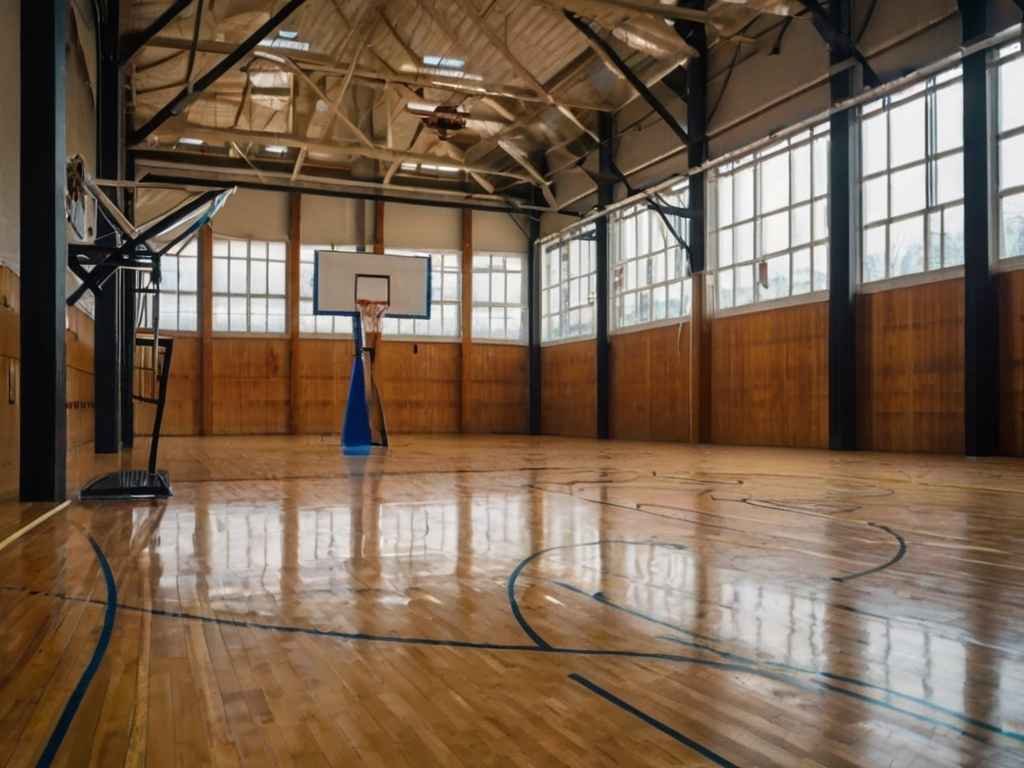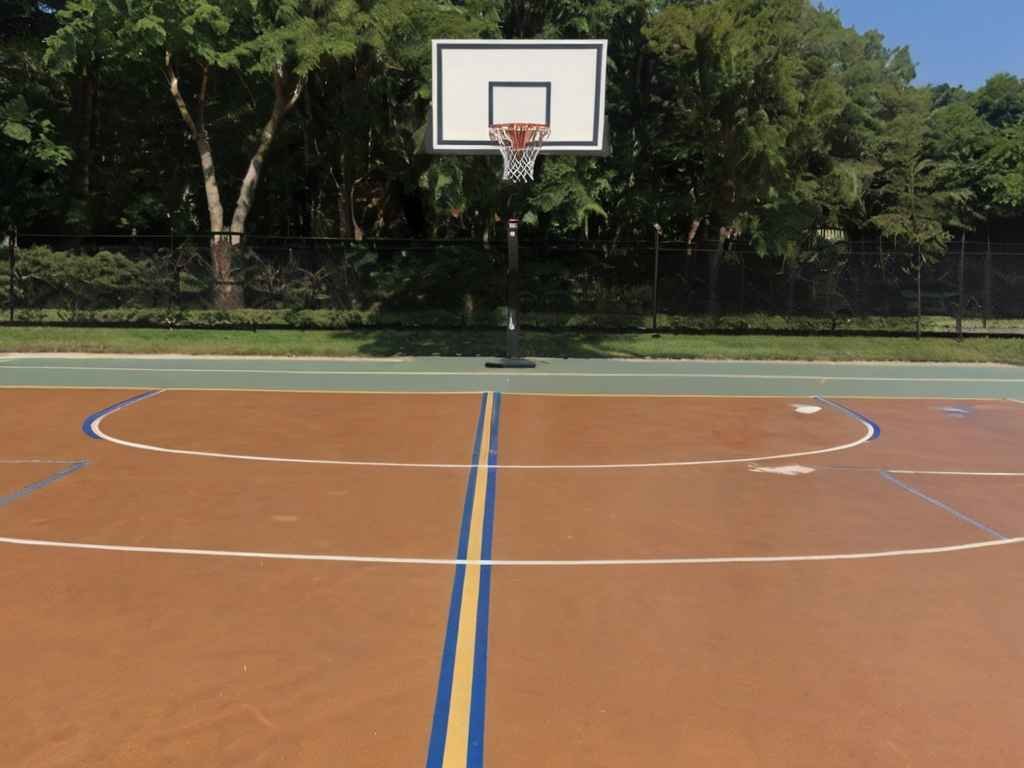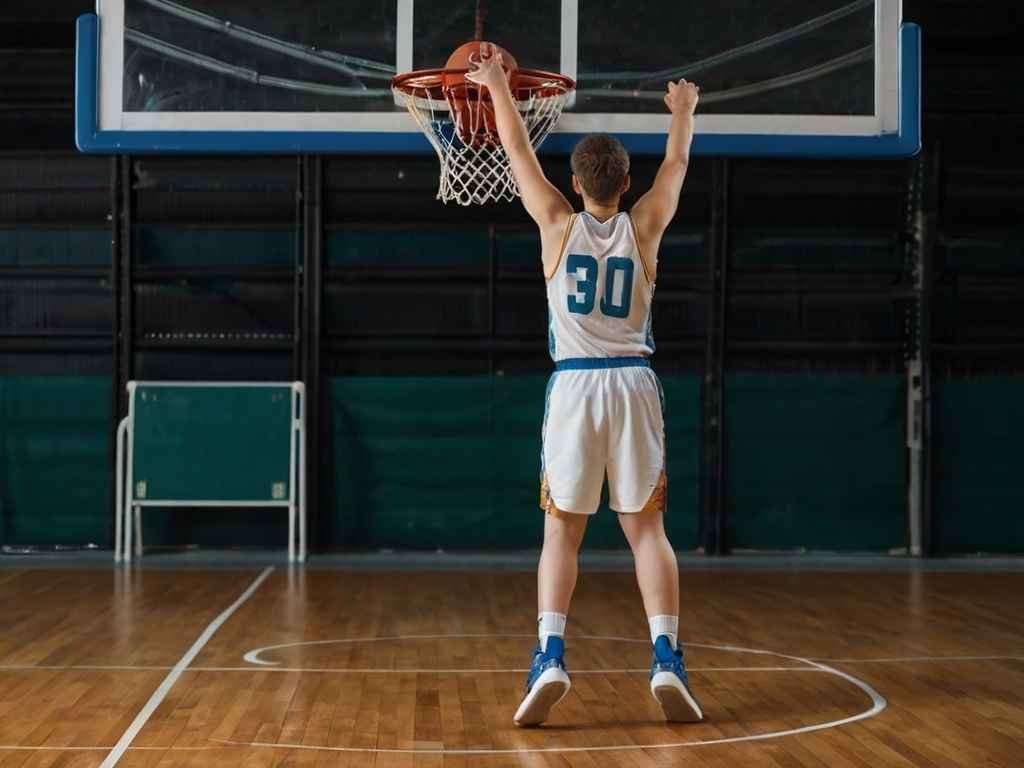When you will be exploring about basketball courts you will came across 2 types of courts: outdoor and indoor. You will be probably figuring out What is difference between indoor and outdoor basketball court?
Indoor and outdoor basketball courts are different in several factors and future trends.We need to understand these differences.Let’s explore in details.
Surface and Material
One of the most apparent differences between indoor and outdoor basketball courts lies in their surface composition. Indoor courts typically feature hardwood surfaces meticulously crafted to provide consistent bounce and traction. These floors often made of maple wood offer players optimal conditions for precise movements and dribbling.
In contrast, outdoor courts employ materials like asphalt or concrete. While durable and resistant to harsh weather conditions, these surfaces lack the uniformity and smoothness of indoor courts. The rough texture can affect ball bounce and player movements requiring adjustments in playing style and technique.
Also Read: What are outdoor basketball courts made of? 5 Best Options
Environmental Factors
As Difference between indoor and outdoor basketball court ,the Sunlight, wind, rain, and temperature fluctuations all contribute to the dynamic nature of outdoor play. While natural light enhances visibility during daytime games it can also create glare affecting shooting accuracy and depth perception.
Moreover, outdoor courts are susceptible to environmental hazards such as debris, puddles, and uneven terrain. Players must adapt to these conditions, refining their skills to accommodate unpredictable factors. Conversely, indoor courts provide a controlled environment shielded from external elements, ensuring consistent playing conditions regardless of weather or time of day.

Durability and Maintenance
The longevity of basketball courts varies depending on their location and construction materials for Difference between indoor and outdoor basketball court. Indoor courts, shielded from harsh weather and limited to controlled indoor environments, typically exhibit greater durability. Regular maintenance, including refinishing and polishing, helps preserve the pristine condition of hardwood floors, ensuring optimal performance for players.
Outdoor courts, exposed to constant use and outdoor elements, require robust construction and frequent upkeep to withstand wear and tear. Resurfacing and sealing are essential to prevent cracks and deterioration caused by weathering and heavy usage. Despite these efforts, outdoor courts may exhibit signs of degradation over time, necessitating periodic repairs and renovations in Difference between indoor and outdoor basketball court.
Also Read: How to Maintain and Clean an Outdoor Basketball Court for Optimal Performance?
Atmosphere and Ambiance
Beyond functional differences, indoor and outdoor basketball courts offer distinct atmospheres and ambiance. Indoor venues, often located within gymnasiums or sports complexes, provide a controlled setting conducive to focused gameplay. The enclosed space amplifies the sounds of squeaking shoes, cheering fans, and echoing basketballs, creating an electrifying atmosphere for players and spectators alike.
Conversely, outdoor courts embody a sense of community and accessibility, serving as gathering places for players of all ages and skill levels. Parks, schoolyards, and neighborhood courts foster a vibrant social environment, where players bond over shared passion for the game. The open-air setting encourages informal play and pickup games, fostering camaraderie and friendly competition among participants when analysing Difference between indoor and outdoor basketball court.

Go Through Table for Difference between indoor and outdoor basketball court
Here’s a table outlining the key difference between indoor and outdoor basketball courts:
| Aspect | Indoor Basketball Court | Outdoor Basketball Court |
|---|---|---|
| Surface Material | Typically hardwood or synthetic flooring | Asphalt, concrete, or rubberized surface |
| Court Size | Standard dimensions (94 feet long, 50 feet wide) | Can vary, but often similar to standard dimensions |
| Climate Control | Climate-controlled environment | Exposed to weather conditions (sun, rain, wind, etc.) |
| Lighting | Artificial lighting | Relies on natural sunlight and possibly artificial lights |
| Maintenance | Requires regular cleaning and maintenance to preserve surface | Susceptible to weather damage and may require frequent repairs |
| Player Comfort | Generally more comfortable playing conditions | Subject to temperature variations and weather discomfort |
| Playing Style | Typically faster-paced and more controlled | May be affected by wind, rain, or uneven surface |
| Usage | Often used for professional and competitive games | Commonly used for recreational games and pickup matches |
Conclusion
In essence,Difference between indoor and outdoor basketball court offer unique experiences shaped by their distinct characteristics and environments. While indoor courts prioritize precision, consistency, and controlled conditions, outdoor courts embrace the dynamic interplay of nature and community spirit.
Whether players prefer the polished professionalism of indoor play or the raw energy of outdoor courts, both settings provide opportunities for athletic expression, skill development, and shared enjoyment of basketball.
Ultimately, the choice between indoor and outdoor courts reflects individual preferences, with each offering its own allure and appeal to players worldwide.
FAQs
- What are the primary difference between indoor and outdoor basketball courts?
Indoor courts typically have hardwood or synthetic flooring, while outdoor courts are often made of asphalt, concrete, or rubberized surfaces. Indoor courts are also climate-controlled and have artificial lighting, whereas outdoor courts are exposed to weather conditions and rely on natural sunlight.
- How does the playing style differ between indoor and outdoor courts?
Indoor courts generally offer a more controlled and faster-paced game due to smoother surfaces and controlled environments. Outdoor courts may have variations in playing style due to weather conditions and surface irregularities.
- Are there differences in maintenance requirements between indoor and outdoor courts?
Yes, indoor courts require regular cleaning and maintenance to preserve the surface quality, while outdoor courts are more susceptible to weather damage and may require frequent repairs.
- Which type of court is more suitable for competitive games?
Indoor courts are typically preferred for professional and competitive games due to their controlled environment and consistent playing surface.
- Are there differences in player comfort between indoor and outdoor courts?
Yes, indoor courts generally offer more comfortable playing conditions as they are climate-controlled, whereas outdoor courts may subject players to temperature variations and weather discomfort.
- Can both indoor and outdoor courts be used for recreational games?
Yes, both types of courts are commonly used for recreational games and pickup matches, but outdoor courts are more prevalent in casual settings due to their accessibility.
- Are there standard dimensions for both indoor and outdoor courts?
Yes, indoor courts typically adhere to standard dimensions (94 feet long, 50 feet wide), while outdoor courts may vary but often resemble standard dimensions.
- How does lighting differ between indoor and outdoor courts?
Indoor courts have artificial lighting, ensuring consistent visibility, whereas outdoor courts rely on natural sunlight supplemented by artificial lights, which may affect visibility depending on the time of day.
- Can weather conditions impact gameplay on outdoor courts?
Yes, weather conditions such as wind, rain, or extreme temperatures can affect gameplay on outdoor courts by altering ball movement and player performance.
- Which type of court is more commonly used for professional games?
Indoor courts are predominantly used for professional games due to their controlled environment, standardized dimensions, and consistent playing surface.





